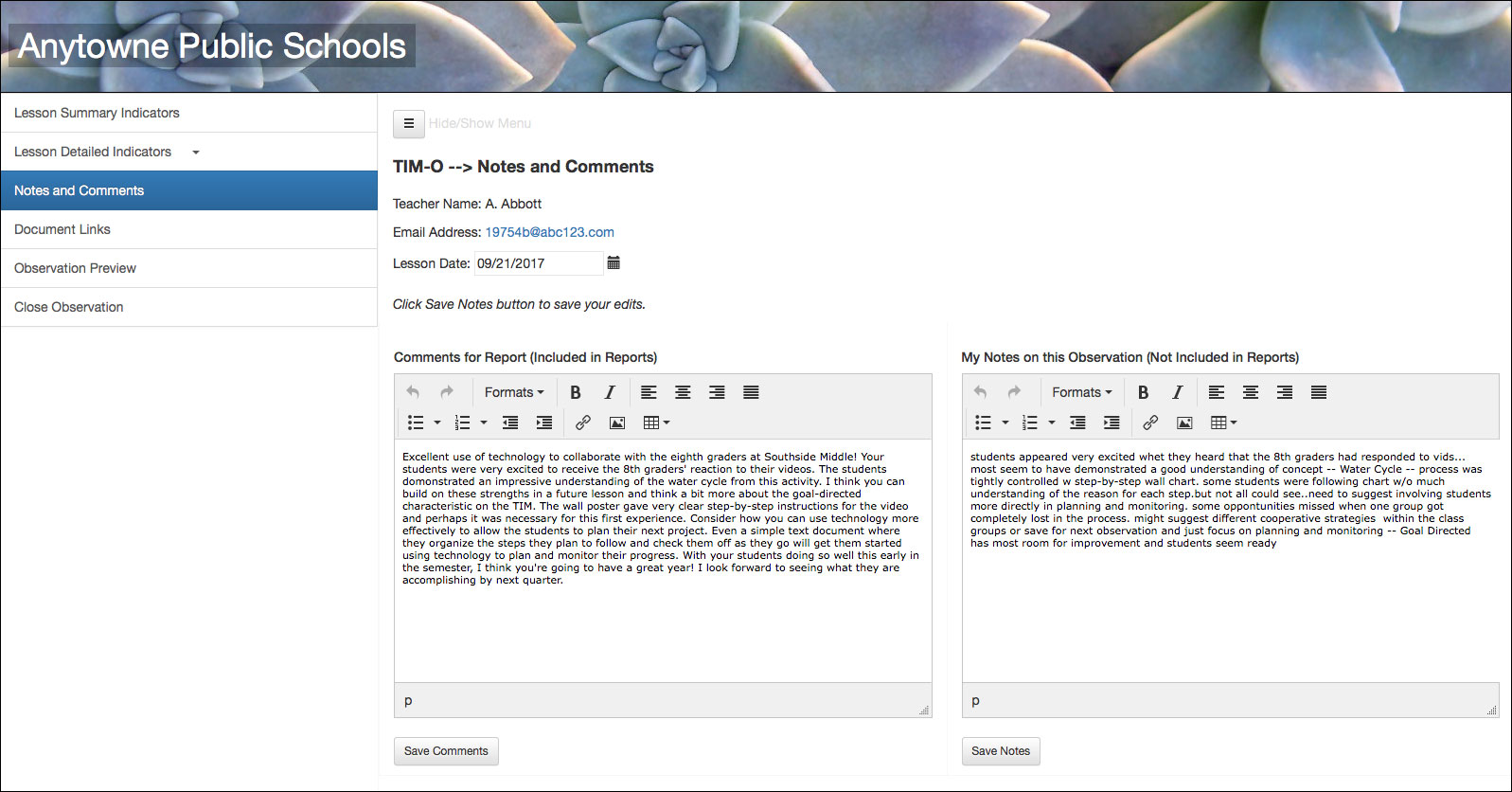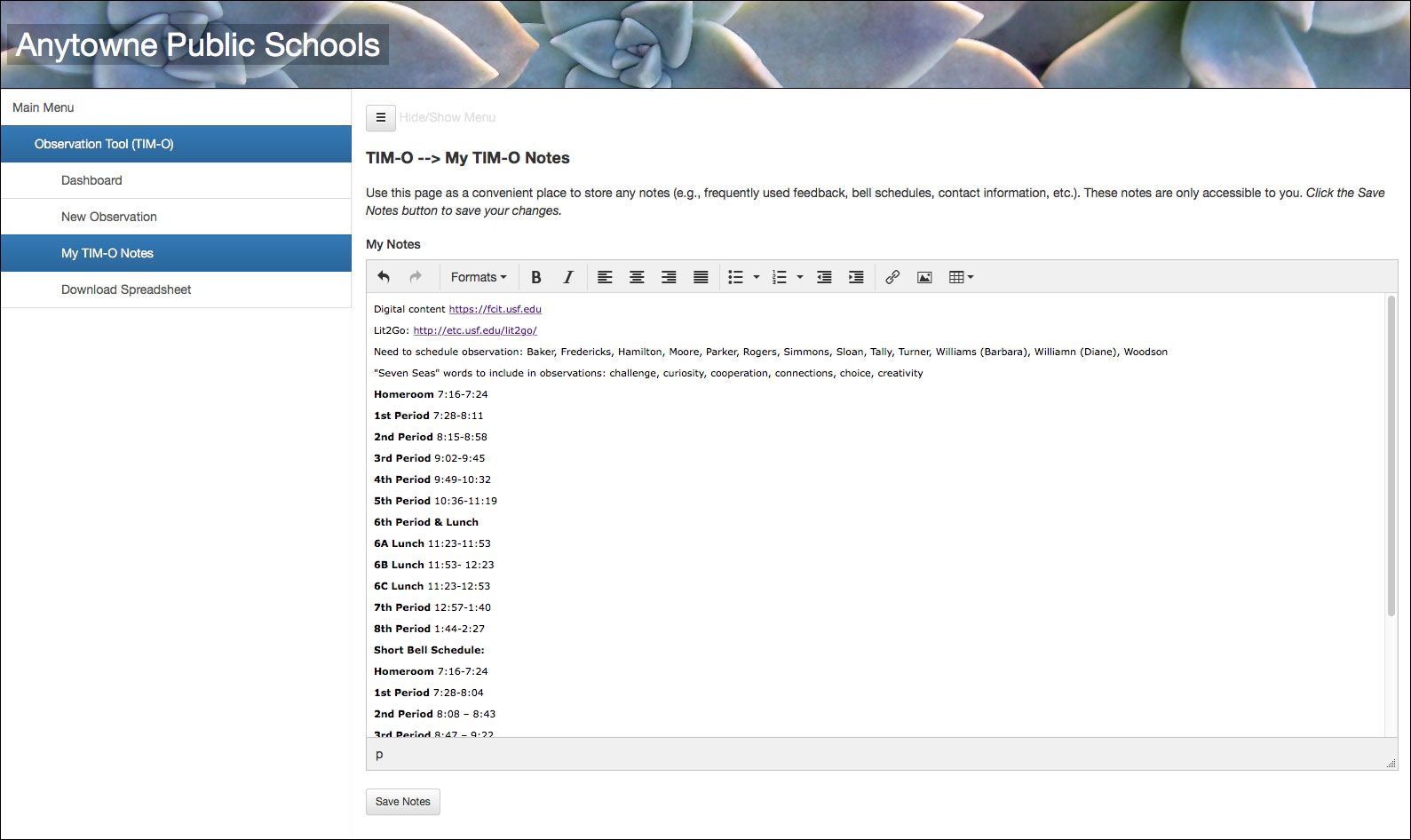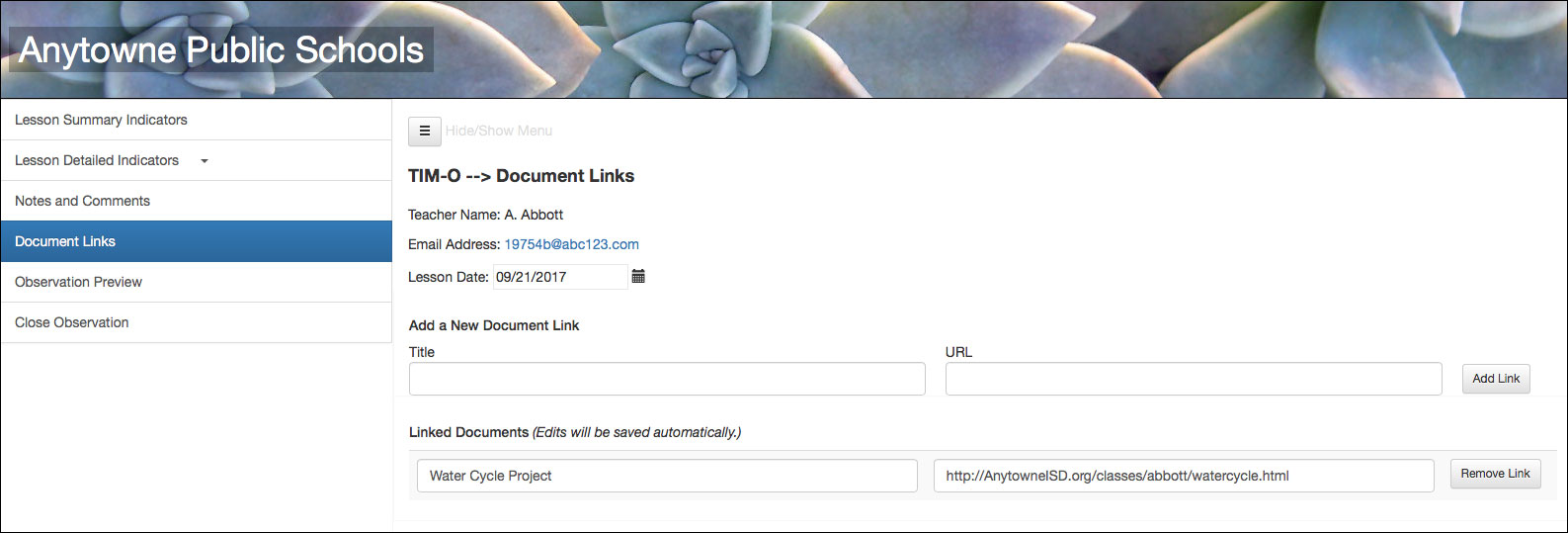Menu
1. TIM Tools Admin Center
The Admin Center provides for management of the TIM Tools suite of applications.
Overview
Getting Started
- Admin Center Access
- Admin Center Dashboard
- Managing Zones (for Districts)
- Managing Zones (for Regional Service Agencies)
- Managing Zones (for Education Ministries, Consultants, Grantors, and Others)
- Managing Schools
Customization
Managing Members
- Uploading and Updating Members
- Profile Screen
- Changing Passwords
- Defining Roles (for Districts)
- Defining Roles (for School Licensees)
- Defining Roles (for Education Ministries, RSAs, Consultants, Grantors, and Others)
Working with Data
- Participation Overview
- Downloading ARTI Data
- Downloading TIM-LP Data
- Downloading TIM-C Data
- Downloading TIM-O Data
- Downloading TIM-R Data
- Downloading TUPS Data
- Using TUPS, TIM-O, TIM-R, and TIM-LP Templates
2. TUPS
The Technology Uses and Perceptions Survey provides essential information for planning technology infrastructure and support and identifying the perceptions and PD needs of teachers.
- TUPS Intro
- Collection Frameworks
- TUPS Intro and Closing Text
- Customizing TUPS Sections and Items
- Accessing School or District TUPS Data
- TUPS Report Template
3. TIM-O / TIM-LP / TIM-R
These three tools are for classroom observation, lesson plan review, and teacher reflection.
Overview
Preparation
TIM-O
- TIM-O: Beginning an Observation
- TIM-O: Question-Based Method
- TIM-O: Matrix-Based Method
- TIM-O: Finishing an Observation
- TIM-O: Print or Share an Observation with a Teacher
- TIM-O: Editing Previous Observations
- TIM-O Report Templates
- Accessing School or District TIM-O Data
TIM-R
TIM-LP
4. TIM-C
The TIM-C allows a coach and client to document the goals, activities, progress, and outcomes of a coaching cycle.
5. ARTI
The ARTI tool provides a framework for teachers to design and conduct their own action research projects.
6. Report Tool
The Report Tool allows a school or district to create TIM-LP, TIM-O, TIM-R, or TUPS reports.
- Report Tool Intro
- Building a New Report
- View, Edit, or Delete Reports
- Interpreting TIM-O Report Data
7. Survey Tool
The Survey Tool allows a school or district to create internal or external surveys on new topics as needed.
- Survey Tool Intro
- Creating a New Internal Survey
- Creating a New Public Survey
- Adding Questions to Your Survey
- Customizing a Library Survey
- Viewing Survey Results
Need help?
Have a question?
Email us at TIM@fcit.us anytime. We want to help you get the most out of your TIM Tools account!
TIM Tools 7.5 Administration Guide
TIM-O: Finishing an Observation
Now that you have a completed TIM profile for the lesson from either the question-based or matrix-based method, it’s time to add comments and document links, and preview your observation. You can also download a PDF of the observation or email it to the teacher you’ve observed.
 Figure 1. A completed lesson profile. On the menu, you’ll see links for Notes and Comments, Document Links, and Observation Preview.
Figure 1. A completed lesson profile. On the menu, you’ll see links for Notes and Comments, Document Links, and Observation Preview.
Comments should be added to an observation whenever possible. Constructive comments go a long way in positioning a TIM observation as a welcome coaching exercise rather than a teacher receiving a “grade” for a lesson. Some districts will require observers to include comments. If your school or district is committed to using the Question Based method of observation and, for good reason, you decide to tweak the resulting profile, you can use the comments field to explain your changes. You might add, for example, “Although the resulting TIM profile indicated the Adoption level for the Collaborative characteristic, I changed that to the Adaptation level because I saw some beginning examples of student choice in this area that the question-based result didn’t capture. I would encourage you to provide additional opportunities for student choice regarding collaboration tools in future lessons.”
A decision is sometimes made at the school or district level to record additional information about observed lessons. Perhaps the district wants to capture whether the Internet or a particular piece of technology is used in each observed lesson. Or the district might want to use each observation as an opportunity, for example, to document the extent to which a particular online service is used so that decisions may be made around extending or terminating a subscription. Since this is an open text field, any sort of additional data may be collected in conjunction with an observation. If some sort of standardized format is used in the text (e.g., “VidService=yes” or “VidService=no”), it will be fairly easy to search all published observations to collect the data.
There are three sources that will help an observer when it comes to writing constructive comments that will benefit the teacher.
- My Notes on This Observation
- Lesson Detailed Indicators
- My TIM-O Notes.
1. My Notes on This Observation. Many observers find it’s easier to take rough field notes than try to write up finished comments in the field, particularly on a handheld device. If you don’t have to worry about spelling or complete sentences, you can keep your focus on the lesson. Perhaps you prefer to enter the final Comments at your desk where you have a full-sized keyboard. Anything you’ve entered into My Notes on this Observation is visible only to you. You may want to take notes to yourself about a follow-up observation or the sort of coaching you plan to implement.
 Figure 2. Observation comments on left, rough notes on right.
Figure 2. Observation comments on left, rough notes on right.
2. Lesson Detailed Indicators. If formal comments are expected with each observation, you may wish to copy appropriate sections of text from the extended descriptors tab and paste them into the notes field to give yourself a head start on comment writing. Just be sure to click the Save Notes or Save Comments buttons as needed before you navigate away to the Indicators section.
3. My TIM-O Notes. Every observer has a separate My TIM-O Notes file available from the TIM-O menu. Since new observations open in a new tab, it’s easy to switch back and forth between the current observation and the My TIM-O Notes window. In addition to contact info, bell schedules, and other practical information you like to have with you when doing an observation, this is a great place to save some typical comments that you can copy here and paste into the Comments field of an observation. Whereas the My Notes on This Observation are your personal notes regarding that one observation, the My TIM-O Notes are available to you from any observation you’re working on so it’s the perfect place to store boilerplate text for comments.
 Figure 3. An observer’s My TIM-O Notes. The observer has added the bell schedule, a few content links to recommend, the names of teachers awaiting observation, and a list of words the district is encouraging observers to use in comments.
Figure 3. An observer’s My TIM-O Notes. The observer has added the bell schedule, a few content links to recommend, the names of teachers awaiting observation, and a list of words the district is encouraging observers to use in comments.
Document Links allow the observer to link appropriate lesson artifacts to the observation. Links might point to an online plan for the lesson observed, a class website of student work, or lesson content posted to video or photo sharing services. You can link any number of documents to the observation. Each link should have a descriptive title and a complete URL. Just add the title in the Title field, the address in the URL field, and click the Add Link button. The system checks to make sure that the URL is properly formatted and will alert you if it is not. Links are saved automatically. Any link already added can be edited by typing directly in the text field, or removed by clicking the Remove Link button.
 Figure 4. The observer has added one document link. Each time a new link is entered, it is added to the bottom of the list.
Figure 4. The observer has added one document link. Each time a new link is entered, it is added to the bottom of the list.
When you are finished with comments and links, select Observation Preview to see what your observation will look like. From this screen you can select the options to Download or Print PDF of Results or Email PDF to Teacher.
 Figure 5. Left: Observation Preview screen displaying the TIM profile and comments. Right: Corresponding PDF.
Figure 5. Left: Observation Preview screen displaying the TIM profile and comments. Right: Corresponding PDF.
An observation is NOT PUBLISHED until the observer publishes it. Each time you start an observation it is added to your Dashboard and listed as Not Published. If you started a dozen observations in a single day, they would all display in the Dashboard as Not Published. It is not until you toggle the Not Published / Published button that the observation is released to the system. Until then, only you are able to view the observation.
